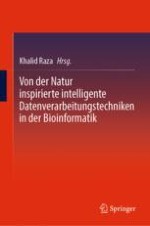2024 | OriginalPaper | Buchkapitel
Optimierte naturinspirierte Rechenalgorithmen zur Erkennung von Lungenerkrankungen
verfasst von : V. Lakshman Narayana, R. S. M. Lakshmi Patibandla, V. Pavani, P. Radhika
Erschienen in: Von der Natur inspirierte intelligente Datenverarbeitungstechniken in der Bioinformatik
Verlag: Springer Nature Singapore
Aktivieren Sie unsere intelligente Suche, um passende Fachinhalte oder Patente zu finden.
Wählen Sie Textabschnitte aus um mit Künstlicher Intelligenz passenden Patente zu finden. powered by
Markieren Sie Textabschnitte, um KI-gestützt weitere passende Inhalte zu finden. powered by
